
David Warren Brubeck was an American jazz pianist and composer, considered one of the foremost exponents of cool jazz. Many of his compositions have become jazz standards including "In Your Own Sweet Way" and "The Duke". Brubeck's style ranged from refined to bombastic, reflecting both his mother's classical training and his own improvisational skills. His music is known for employing unusual time signatures as well as superimposing contrasting rhythms, meters, and tonalities.

Joseph Albert Morello was an American jazz drummer best known for his work with the Dave Brubeck Quartet. He was particularly noted for playing in the unusual time signatures employed by that group in such pieces as "Take Five" and "Blue Rondo à la Turk". Popular for its work on college campuses during the 1950s, Brubeck's group reached new heights with Morello. In June 1959, Morello participated in a recording session with the quartet—completed by the alto saxophonist Paul Desmond and the bassist Eugene Wright—that yielded "Kathy's Waltz" and "Three to Get Ready", both of which intermingled 3/4 and 4/4 time signatures.

"Take Five" is a jazz standard composed by saxophonist Paul Desmond and originally recorded by the Dave Brubeck Quartet for their album Time Out at Columbia Records' 30th Street Studios in New York City on July 1, 1959. Two years later it became a surprise hit and the biggest-selling jazz single ever. Revived since in numerous movie and television soundtracks, the piece still receives significant radio airplay. The single was inducted into the Grammy Hall of Fame in 1996.
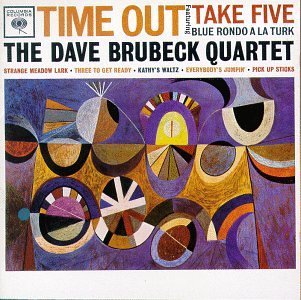
Time Out is a studio album by the American jazz group the Dave Brubeck Quartet, released in 1959 on Columbia Records. Recorded at Columbia's 30th Street Studio in New York City, it is based upon the use of time signatures that were unusual for jazz such as 9
8, 6
4 and 5
4. The album is a subtle blend of cool and West Coast jazz.

"Dancing in the Street" is a song written by Marvin Gaye, William "Mickey" Stevenson and Ivy Jo Hunter. It first became popular in 1964 when recorded by Martha and the Vandellas whose version reached No. 2 on the Billboard Hot 100 chart and peaked at No. 4 in the UK Singles Chart. It is one of Motown's signature songs and is the group's premier signature song. A 1966 cover by the Mamas & the Papas was a minor hit on the Hot 100 reaching No. 73. In 1982, the rock group Van Halen took their cover of "Dancing in the Street" to No. 38 on the Hot 100 chart and No. 15 in Canada on the RPM chart. A 1985 duet cover by David Bowie and Mick Jagger charted at No. 1 in the UK and reached No. 7 in the US. The song has been covered by many other artists, including The Kinks, Tages, Grateful Dead, Little Richard, Myra, and The Struts.
Triple metre is a musical metre characterized by a primary division of 3 beats to the bar, usually indicated by 3 (simple) or 9 (compound) in the upper figure of the time signature, with 3
4, 3
2, 3
8 and 9
8 being the most common examples. The upper figure being divisible by three does not of itself indicate triple metre; for example, a time signature of 6
8 usually indicates compound duple metre, and similarly 12
8 usually indicates compound quadruple metre.
"Malagueña" is a song by Cuban composer Ernesto Lecuona. It was originally the sixth movement of Lecuona's Suite Andalucía (1933), to which he added lyrics in Spanish. The song has since become a popular, jazz, marching band, and drum corps standard and has been provided with lyrics in several languages. In general terms Malagueñas are flamenco dance styles from Málaga in the southeast of Spain.
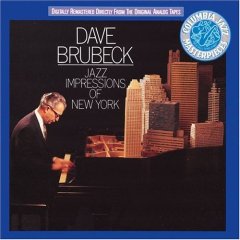
Jazz Impressions of New York is a jazz album released by Dave Brubeck. The compositions were for the television show Mr. Broadway.
"Blue Rondo à la Turk" is a jazz standard composition by Dave Brubeck. It appeared on the album Time Out in 1959. It is written in 9
8 time, with one side theme in 4
4, and the choice of rhythm was inspired by the Turkish aksak time signatures. It was originally recorded by the Dave Brubeck Quartet with Dave Brubeck on piano, Paul Desmond on alto saxophone, Eugene Wright on bass, and Joe Morello on drums.

Walking on Eggshells is the second studio album by Paddy Milner, released on 2004-10-25.

"Neutron Dance" is a song written by Allee Willis and Danny Sembello which was introduced by the Pointer Sisters on their 1983 album Break Out. The song became a Top Ten hit in 1985, its success augmented by being prominently featured on the soundtrack of motion picture Beverly Hills Cop.

Time Further Out is a jazz studio album by the Dave Brubeck Quartet. Recorded and released in 1961 on the Columbia label, the album features the lineup of the "Classic Quartet": pianist and leader Dave Brubeck, alto saxophonist Paul Desmond, bassist Eugene Wright, and drummer Joe Morello. The album was recorded by engineer Fred Plaut and produced by Teo Macero.
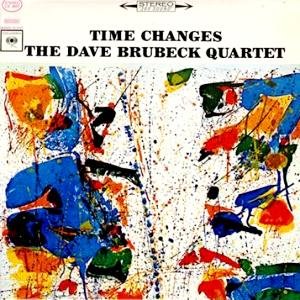
Time Changes is a 1964 album by The Dave Brubeck Quartet, based upon the use of time signatures that were, because of Brubeck's previous work, a mainstay in popular jazz music.

Brubeck Plays Brubeck is a jazz album by pianist Dave Brubeck. The cover features design by S. Neil Fujita.
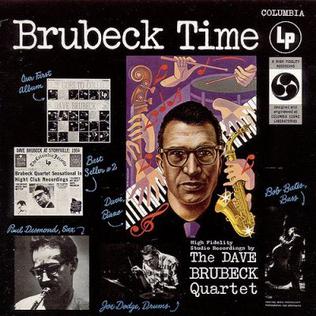
Brubeck Time is a jazz album by The Dave Brubeck Quartet, a rare studio recording from that period of the band, when it was recording mostly live albums. It was recorded in the fall of 1954, and originally released in 1955 under the Columbia label as CL 622. In 1968, Columbia re-channeled the album for stereo and re-released it as Instant Brubeck under the Harmony label as HS 11253. It was later re-released again on CD in 1991 under the title Interchanges '54 as CK 47032, with the addition of four tracks from Jazz: Red Hot and Cool.

Time In is a 1966 studio album by Dave Brubeck, the last of Brubeck's 'Time' series.
London Flat, London Sharp is an album by Dave Brubeck. It was recorded in 2004 and contains quartet performances of new and previously recorded pieces, most of which were written by Brubeck.

Countdown—Time in Outer Space is a studio album released by the Dave Brubeck Quartet in 1962 on Columbia LP record CS 8575 (stereo) and CL 1775 (mono). The front cover features the 1959 painting Orange and Black Wall by Franz Kline. In Australia the album appeared on the Coronet label. It was re-released, for the first time in digital format, in 2004 as part of a compact disc collection titled Dave Brubeck: For All Time. It was again released as part of the box set The Dave Brubeck Quartet: the Columbia Studio Albums Collection 1955-1966. Both CD re-releases feature a bonus track titled "Fatha".
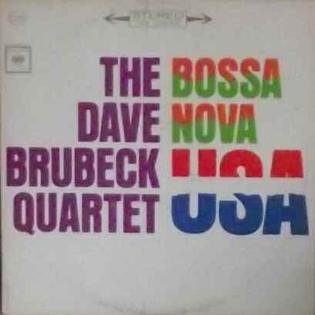
Bossa Nova U.S.A. is a studio album released by the Dave Brubeck Quartet in 1963 by Columbia originally in the United States as LP record CS 8798 (stereo) and CL 1998 (mono) and in England as SBPG 62127. It was also released by CBS in Australia, as catalog SPB 233.038.

The Crossing is 2001 studio album by pianist Dave Brubeck and his quartet.















